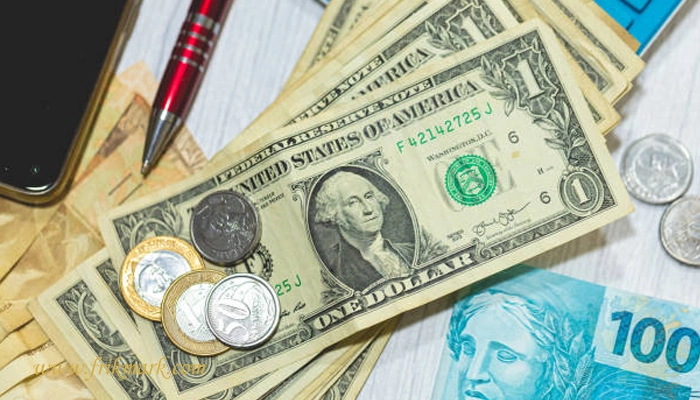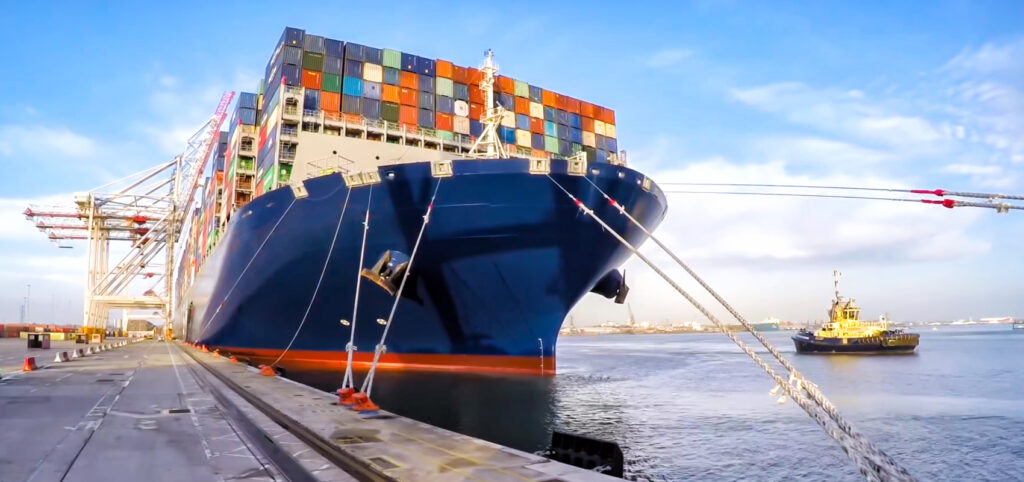Money is one of the most important economic and social tools of any country, playing a vital role in facilitating transactions, determining the value of goods and services, and maintaining economic stability. In Brazil, the official currency is known as the Real and serves as the backbone of the country’s financial and economic system. The Brazilian currency is not only a means of buying and selling in domestic markets, but also a symbol of the country’s economic stability, monetary policies, and international standing.
Given that Brazil is the largest country in Latin America and one of the world’s major economies, it is important to understand its currency accurately. The value of the Brazilian currency against other currencies such as the US dollar, the Iranian toman, and the Afghan afghani has a direct impact on trade, investment, and everyday life in Brazil for people. In addition, changes in the price and exchange rate of the real affect economic decisions made by the government and the private sector.
This article will provide a comprehensive overview of the Brazilian currency, its history, various monetary units, exchange rates, and factors affecting the value of the real. It will also analyze the challenges and opportunities facing the Brazilian currency and the role of the central bank in its management. The goal is to provide the reader with a complete picture of the importance of the Brazilian currency in the country’s economy and society.
Also read: Customs clearance in Brazil
History of Brazilian money
Brazilian currency has undergone many changes throughout its history, reflecting the country’s economic, political, and social changes. During the Portuguese colonial period, Brazil used Portuguese monetary units, which included coins such as the reais and the peso. After Brazil gained independence in 1822, the country gradually developed its own independent monetary system.
During the 19th and 20th centuries, Brazil changed its currency several times to adapt to the economic and inflationary conditions of the time. Units such as the cruzeiro, cruzado, and cruzeiro novena were introduced as the official currency of Brazil at different times. These changes were often made due to economic pressures and high inflation in order to maintain the value of the currency.
Finally, in 1994, Brazil introduced a new currency, the Real, to replace the Cruzeiro in an attempt to bring financial stability and reduce inflation in the country. The Real was quickly accepted as the official and reliable currency of Brazil and remains the country’s official currency. The introduction of the Real was one of the most successful measures taken by the Brazilian government to deal with the economic crisis, which had a positive impact on the country’s economy and financial markets.
Therefore, the history of Brazilian money reflects the country’s long path of economic endeavors and changes, which have continued from the colonial era to the present day, and demonstrates the importance of maintaining monetary stability for economic development.
Also read: Where is the capital of Brazil?
Brazilian currency (real)

The official currency of Brazil is the Real, abbreviated as BRL. The Brazilian Real was introduced in 1994 as part of a successful economic stabilization program called Plano Real, replacing the previous unit, the Cruzeiro. The main goal of introducing the Real was to control hyperinflation and create financial stability in the Brazilian economy, which was largely successful, increasing public confidence in the national currency.
The real is available to the public in the form of banknotes and coins. Real banknotes are printed in various denominations, the most common of which are 2, 5, 10, 20, 50, 100 and 200 reals. There are also coins in denominations of 1, 5, 10, 25 and 50 centavos (Cêntavos), with one hundred centavos equal to one real. The design of Brazilian banknotes and coins is very diverse in appearance and includes images of historical figures, native animals and natural symbols of the country, each representing a part of Brazil’s rich culture and nature.
In addition to its aesthetic appeal, Brazilian money has advanced security features such as raised markings, special patterns, and variable colors that help make it harder to counterfeit. These features are important because the country has historically struggled with counterfeiting and inflation.
Overall, the real is not only an important financial instrument in Brazil, but also a symbol of national identity and the country’s economic efforts for stability and sustainable growth.
Also read: Names of cities in Brazil
Brazilian currency exchange rates and prices
The value of the Brazilian currency, or real (BRL), fluctuates continuously in global markets and is influenced by various factors such as domestic economic policies, inflation, interest rates, and the global economic situation. The exchange rate of the real to various currencies, including the US dollar (USD), Iranian toman (IRR), and Afghan afghani (AFN), is very important because it has a direct impact on foreign trade, investment, and the purchase of imported goods in Brazil and other countries.
Real to US Dollar Conversion Rate
The US dollar is one of the most common currencies against which the real is valued. The real to dollar exchange rate usually fluctuates over time and depends on the financial and economic policies of the two countries. Currently, one US dollar is approximately equal to 5 to 6 Brazilian reals (the exact figures vary depending on the daily exchange rate).
Real to Iranian Toman exchange rate
In the Iranian market, converting the real to the toman is also of particular importance, especially for people who do business with Brazil or plan to travel to the country. The real to toman conversion rate varies according to the official and free market exchange rates, but usually each Brazilian real is equivalent to several thousand Iranian tomans (this amount varies depending on currency market fluctuations).
Real to Afghan Afghani exchange rate
Also, in some neighboring and regional countries, such as Afghanistan, the real is also converted into Afghanis. The real to Afghani conversion rate depends on regional and global market conditions, and each real may be equivalent to several Afghanis.
Sample table of conversion of Brazilian currency to different currencies
| Brazilian currency (real) | Equivalent to US Dollar (USD) | Iranian Toman (IRR) equivalent | Afghan Afghani (AFN) equivalent |
|---|---|---|---|
| 1 BRL | ~0.20 USD | ~7000 IRR | ~15 AFN |
| 10 BRL | ~2 USD | ~70000 IRR | ~150 AFN |
| 100 BRL | ~20 USD | ~700000 IRR | ~1500 AFN |
Note: The numbers in the table are approximate and provided as examples and will vary depending on the daily exchange rate.
Exchange rate fluctuations have a direct impact on the prices of imported and exported goods and services, as well as the cost of travel and international trade in Brazil. Therefore, accurate and up-to-date knowledge of Brazil’s currency exchange rates is of great importance to businessmen, investors, and travelers.
Factors affecting the value of the Brazilian currency
The value of the Brazilian currency, the Real (BRL), is influenced by a set of internal and external factors that affect economic stability and its exchange rate. Understanding these factors is crucial to understanding the state of the Brazilian currency and predicting its future trends.
One of the most important factors is domestic inflation . Throughout Brazil’s history, high inflation has led to a depreciation of the national currency. Governments and the Brazilian Central Bank have tried to control inflation and maintain the value of the real by adopting various monetary and fiscal policies. The success of the economic stabilization program in 1994 and the introduction of the real is an example of these efforts.
The next factor is the state of the global economy and international markets . As a major exporter of commodities such as coffee, soybeans, and iron, Brazil is highly dependent on the world prices of these commodities. Changes in world prices can cause the value of the real to fluctuate; for example, a decrease in the price of Brazilian exports may cause the value of the real to decline.
The Brazilian government’s monetary and fiscal policies also play a significant role in determining the value of the currency. Decisions regarding interest rates, money supply control, and budget deficit management affect the stability of the real. The country’s political situation and the level of confidence in the Brazilian economy by domestic and foreign investors can also have an impact.
Interest rates , set by the Brazilian Central Bank, play a key role in attracting foreign investment and maintaining the value of the real. High interest rates usually attract foreign investment and increase demand for the real.
Finally, international political and economic events can also cause sudden fluctuations in the value of the real. These events include changes in US policies, global financial crises, or domestic political developments in Brazil.
Therefore, the value of the Brazilian currency is the result of a complex interaction of various economic, political, and global factors that affect the country’s economy and influence the fluctuations of the real’s exchange rate.
Monetary policies and the role of the Central Bank of Brazil
The Central Bank of Brazil (Banco Central do Brasil) is a key institution in managing Brazil’s currency and maintaining economic stability. It is responsible for implementing monetary policy, controlling inflation, stabilizing the exchange rate, and overseeing the financial and banking system. The role of the Central Bank of Brazil is crucial in maintaining the value of the national currency, the real (BRL).
One of the central bank’s main functions is to set the policy interest rate. By raising or lowering the interest rate, the central bank can control the demand for money and curb inflation. For example, in a situation of high inflation, raising the interest rate reduces borrowing costs and reduces consumption, which ultimately reduces inflation and strengthens the value of the real.
In addition to interest rates, the Brazilian Central Bank also manages exchange rate policies to control extreme fluctuations in the foreign exchange market. These policies include intervening in the foreign exchange market to maintain the stability of the real’s exchange rate against the dollar and other major currencies. By managing the supply and demand for foreign exchange, the central bank tries to prevent sudden fluctuations that could harm the economy.
The central bank also closely supervises the banking system and financial institutions to maintain financial soundness and public confidence. It uses various tools, such as legal reserves, open market operations, and credit policies, to regulate liquidity and control financial risks.
Finally, the Brazilian Central Bank, in collaboration with the government and other financial institutions, develops long-term plans for economic stability and sustainable growth. This cooperation plays an important role in improving economic conditions, strengthening the real, and attracting foreign investment.
Overall, the Central Bank of Brazil plays an important role in managing Brazil’s currency and, through monetary and exchange rate policies, ensures the country’s economic stability.
Monetary policies and the role of the Central Bank of Brazil
The Central Bank of Brazil (Banco Central do Brasil) is a key institution in managing Brazil’s currency and maintaining economic stability. It is responsible for implementing monetary policy, controlling inflation, stabilizing the exchange rate, and overseeing the financial and banking system. The role of the Central Bank of Brazil is crucial in maintaining the value of the national currency, the real (BRL).
One of the central bank’s main functions is to set the policy interest rate. By raising or lowering the interest rate, the central bank can control the demand for money and curb inflation. For example, in a situation of high inflation, raising the interest rate reduces borrowing costs and reduces consumption, which ultimately reduces inflation and strengthens the value of the real.
In addition to interest rates, the Brazilian Central Bank also manages exchange rate policies to control extreme fluctuations in the foreign exchange market. These policies include intervening in the foreign exchange market to maintain the stability of the real’s exchange rate against the dollar and other major currencies. By managing the supply and demand for foreign exchange, the central bank tries to prevent sudden fluctuations that could harm the economy.
The central bank also closely supervises the banking system and financial institutions to maintain financial soundness and public confidence. It uses various tools, such as legal reserves, open market operations, and credit policies, to regulate liquidity and control financial risks.
Finally, the Brazilian Central Bank, in collaboration with the government and other financial institutions, develops long-term plans for economic stability and sustainable growth. This cooperation plays an important role in improving economic conditions, strengthening the real, and attracting foreign investment.
Overall, the Central Bank of Brazil plays an important role in managing Brazil’s currency and, through monetary and exchange rate policies, ensures the country’s economic stability.
Uses of Brazilian money in the economy
The Brazilian currency, or real (BRL), plays a central and widespread role in the country’s economy, influencing various economic and social sectors in Brazil. It is a means of everyday transactions, savings, investments, and debt settlement, helping to smooth economic activity.
In the daily lives of Brazilians, the real is used as the main means of payment for goods and services. Stores, markets, restaurants, and small and large businesses all conduct their financial transactions in the real. This makes the stability and value of the Brazilian currency directly affect the quality of life and purchasing power of the people.
On the other hand, the Brazilian currency plays an important role in the investment and trade sectors. Domestic companies and investors use the real to purchase equipment, develop projects, and expand their businesses. The real is also important in international transactions and Brazil’s foreign trade, especially in transactions with countries that are Brazil’s trading partners. The stability of the Brazilian currency can increase the attractiveness of foreign investment and contribute to the country’s economic development.
The Brazilian currency also plays a key role in the country’s banking and financial system. Banks, financial institutions, and capital markets use the real to conduct transactions, make loans, and make investments. As such, the real plays an important role in generating economic growth, job creation, and infrastructure development.
Ultimately, Brazil’s currency, as the country’s economic representative, is a reflection of Brazil’s policies and financial situation, which affect the lives of all people and the country’s economic future.
Challenges and opportunities for Brazilian money
Despite the progress and relative stability it has made in recent decades, the Brazilian currency, or real, continues to face significant challenges that affect the country’s economy and financial markets. At the same time, there are significant opportunities to strengthen and develop the national currency, which could contribute to the sustainable growth of the Brazilian economy.
One of the biggest challenges is inflation and economic volatility . Despite controls, occasional inflation and fluctuations in the real exchange rate continue to be a concern for policymakers and the Brazilian public. These fluctuations can reduce people’s purchasing power and increase import costs and foreign debt.
Another challenge is the impact of political factors and economic instability . Sudden changes in economic policies, corruption issues, and political instability can reduce the confidence of domestic and foreign investors and put pressure on the value of the Brazilian currency.
On the other hand, there are many opportunities for the Brazilian currency. One of the most important opportunities is the expansion of international trade and the attraction of foreign investment . By increasing trade cooperation and improving economic relations with different countries, the real can strengthen its position in global markets.
Additionally, financial innovations and digital technologies , such as digital money and e-banking, have created new opportunities to improve the efficiency of Brazil’s monetary system. These technologies can help reduce transaction costs, increase transparency, and improve people’s access to financial services.
Ultimately, smart economic policies and political stability can help bolster confidence in the Brazilian currency and pave the way for sustainable economic growth. Given Brazil’s strategic location and abundant resources, the future of the Brazilian currency is bright and promising if managed properly.
Frequently asked questions about Brazilian money
1. Why was the Brazilian currency named “Real” and what does it mean?
The Brazilian currency, the real, comes from the Portuguese word for “real” or “genuine.” The name comes from the Portuguese colonial period in Brazil, when a currency called the real was in use. By returning to this name, the Brazilian government wanted to strengthen national identity and monetary stability, and to show that the currency represented the country’s real and solid economy.
Read also: Brazilian language
2. Does Brazil have any plans to use a national digital currency?
Yes, the Brazilian Central Bank is researching and developing a Central Bank Digital Currency (CBDC) project, known as the “Digital Real.” The project aims to increase the efficiency of the payments system, reduce transaction costs, and promote financial transparency, and is set to be officially introduced in the near future.
3. What are the differences between the old and new real banknotes?
The new real banknotes feature more advanced security features in terms of design, such as raised markings, hologram patterns, color-changing inks, and metal threads, making them more difficult to counterfeit. The new design also focuses more on Brazil’s cultural and natural aspects and features more modern imagery, while the old banknotes were printed with simpler, more classic designs.
4. How can I safely convert or trade Brazilian currency?
To safely exchange Brazilian currency, it is best to use reputable exchange offices, banks, and official financial institutions. Using electronic banking systems and international credit cards are also safe ways to make financial transactions. When traveling abroad, it is also recommended to use official currency exchange centers and avoid dealing with unauthorized people.
5. Is Brazilian currency accepted outside Brazil?
The real is generally not accepted as an official currency outside of Brazil, and US dollars or euros are usually used for international transactions. However, in some areas with a large number of Brazilian tourists, the real may be accepted on a limited basis, but it is best to carry international currencies for international travel.
6. What has been the impact of the global economic crises on the Brazilian currency?
Global economic crises often cause the real to depreciate, as foreign investors tend to shift their funds to more stable currencies, such as the US dollar. This reduces demand for the real and, as a result, its value decreases. Also, the decline in the prices of Brazilian exports during crises can lead to a weakening of the economy and the national currency.
7. How does the Brazilian currency compare to other Latin American currencies?
The Brazilian real is one of the strongest and most stable currencies in Latin America, and due to the size of the Brazilian economy and its diversity of resources, it fares better than the currencies of some countries in the region, such as Argentina or Venezuela, which are highly inflated. However, economic and political fluctuations sometimes cause changes in its value.
8. How prevalent are mobile and electronic payment systems in Brazil?
Mobile and digital payment systems are rapidly expanding in Brazil. With the introduction of new technologies such as PIX (Brazilian Instant Payment System), the use of electronic payments has increased dramatically, and many people and businesses conduct their transactions via mobile and the internet. This trend has played an important role in improving financial access and reducing the use of cash.
9. What laws govern the transfer of Brazilian money abroad?
Transferring money from Brazil to abroad is subject to strict rules and regulations overseen by the Brazilian Central Bank and financial authorities. The aim of these rules is to prevent tax evasion, money laundering and maintain economic stability. Individuals and companies must provide legal documentation and justification for transferring large amounts, and transactions are usually conducted through official banking channels.
10. Is the Brazilian currency also backed by foreign banks?
Large, reputable global banks usually list the Brazilian real as a tradable currency and can offer services related to foreign exchange accounts and real exchange, but this support varies depending on the bank and the country. In general, the real is less well-known in international markets than major currencies such as the dollar or euro, but due to Brazil’s economic importance, many foreign banks recognize and support it.
Conclusion
The Brazilian currency, or real, is not only the main means of conducting financial transactions in the country, but also a symbol of Brazil’s economic and fiscal policy efforts for stability and sustainable growth. The long history and numerous developments of the Brazilian currency reflect economic challenges, crises, and the successes of governments in managing the economy.
Brazil’s currency, the real, was introduced after years of volatility and high inflation, and has largely restored stability and public confidence in the country’s financial markets. The real’s exchange rate against other currencies, such as the dollar, toman, and Afghani, has a significant impact on trade, investment, and people’s daily lives, and its fluctuations are an important issue for policymakers and economic activists.
Several factors, including inflation, monetary policies, interest rates, the global economic situation, and political developments, affect the value of the Brazilian currency, and proper management of these factors by the central bank and the government is key to maintaining economic stability. Despite economic and political challenges, great opportunities such as the development of foreign trade, attracting investment, and new financial technologies can guide the path of the Brazilian currency towards a bright and sustainable future.
Ultimately, Brazil’s currency is an integral part of the country’s economy, which, with proper management and smart policies, can play an effective role in improving the economic situation and well-being of the Brazilian people.






